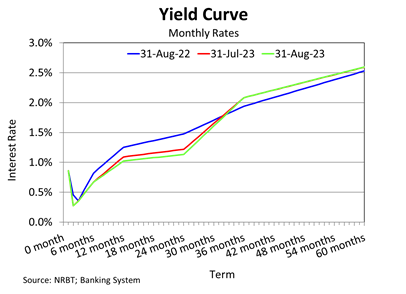Imported food and fuel prices drive headline inflation higher
- Details
- Category: Economic Releases
- Created: 30 June 2017
| Inflation April 2017 | ||||
| Apr 17 |
Mar 17 |
Feb 17 |
Jan 17 |
|
| Headline * | 9.5 | 9.4 | 8.9 | 5.4 |
| Domestic ^ | 2.6 | 2.2 | 3.1 | 1.1 |
| Imported ^ | 6.9 | 7.2 | 5.8 | 4.3 |
| * Year-ended growth | ||||
| ^ Percentage point contribution to year-ended growth | ||||
The annual headline inflation in April 2017 rose significantly by 9.5%, similar to the annual headline inflation recorded in the previous month. The same period in 2016 recorded an annual deflation of 0.9%. This was due to the very low level of imported prices in April 2016, which recorded a negative 6.5%. The impact of the custom duties and excise taxes imposed on various goods in July 2016 continued to be reflected in the annual headline inflation. Additionally, 2017 has had longer periods of low supply local vegetables and fruits in the domestic market compared to the same period of last year. According to the Reserve Bank’s liaison program with domestic growers this was due to a dry weather for growing vegetables from December 2016 to May 2017.
Inflation over the month rose by 0.3% mainly driven by the rise in the prices of local food such as fruits and vegetables, eggs, as well as the price of electricity.
The annual imported inflation rose by 12.7% driven by higher food and oil prices. Imported food was the largest contributor which rose by 16.4% contributing 4.3 percentage points to the overall headline inflation. All imported food categories rose, except for fruits and vegetables, and this was led by a 23.2% increase in prices of meat, fish & poultry reflecting a 37.4% and 27.2% rise in the price of mutton flap and chicken pieces over the year. This was followed by a 15.6% rise in the prices of other food components for items such as sugar and flour rising by 49.4% and 2.9% respectively. Dairy farm and vegetable products rose by 3.3% for goods such as cheese and butter. The prices of these imported food continued to reflect the excise taxes and custom duties imposed on various imported food in July 2016. Similarly, the price of Winfield blue tobacco rose by 32.5%. Additionally, the increase in world oil prices drove the price of fuel higher by 26.1%, petrol and diesel prices rose by 26% and 23% respectively. This was followed by an 8.5% increase in the price of fuel and power under the household operations group which comprised of goods such as kerosene and liquid petroleum gas. The price of house maintenance goods also increased by 2.9% particularly the price of items such as paint and bricks.
However, over the month imported prices declined by 0.2% largely due to decline of imported food and fuel which was sufficient to offset the increase in liquid petroleum gas and kerosene.
Similarly, the domestic annual inflation rate rose by 5.7% accounting for 2.6 percentage points of the headline inflation. The local inflation was driven by the rise in electricity price, continued short supply of kava-Tonga, and volatile local food prices. Increases in oil prices drove the electricity price higher by 22.7%. The price of kava-Tonga increased over the year by 55.5%, followed by a 3.5% increase in the price of local food, and a 5.4% increase in the price of domestic alcohol.
Monthly domestic inflation rose by 0.9% at the end of April due mainly to the seasonality of local food particularly for fruits and vegetables, dairy products, and goods from the bakery.
On the outlook, the Reserve Bank expects the upward inflationary pressure to remain in the near term as world oil and food prices slowly rise, coupled with the impact of the excise tax which was introduced in July 2016. The continued shortage of supply in kava-Tonga compared to its high demand is likely to impact the domestic inflation for some time, therefore contribute to the annual headline inflation. The Reserve Bank anticipates the annual headline inflation rate to fall below the inflation reference rate of 5% per annum in 2017/18. However, movements in commodity and oil prices, and other temporary factors may pose a risk to this forecast. Additionally, the vulnerability of Tonga to natural disasters also poses a risk to the local food prices and consequently the inflation outlook.
Resources
| Inflation - April 2017 Released on 30 June 2017 | |
| See more Inflation releases. |

